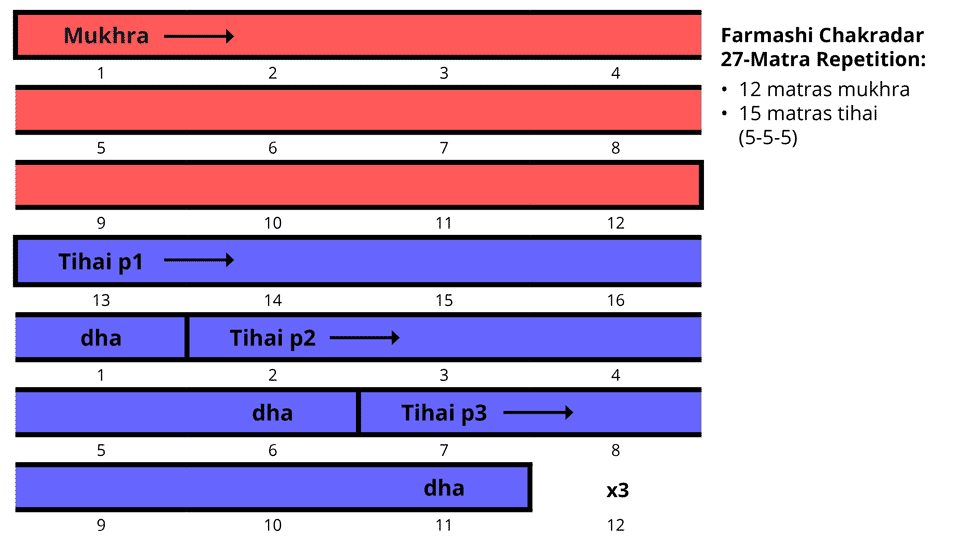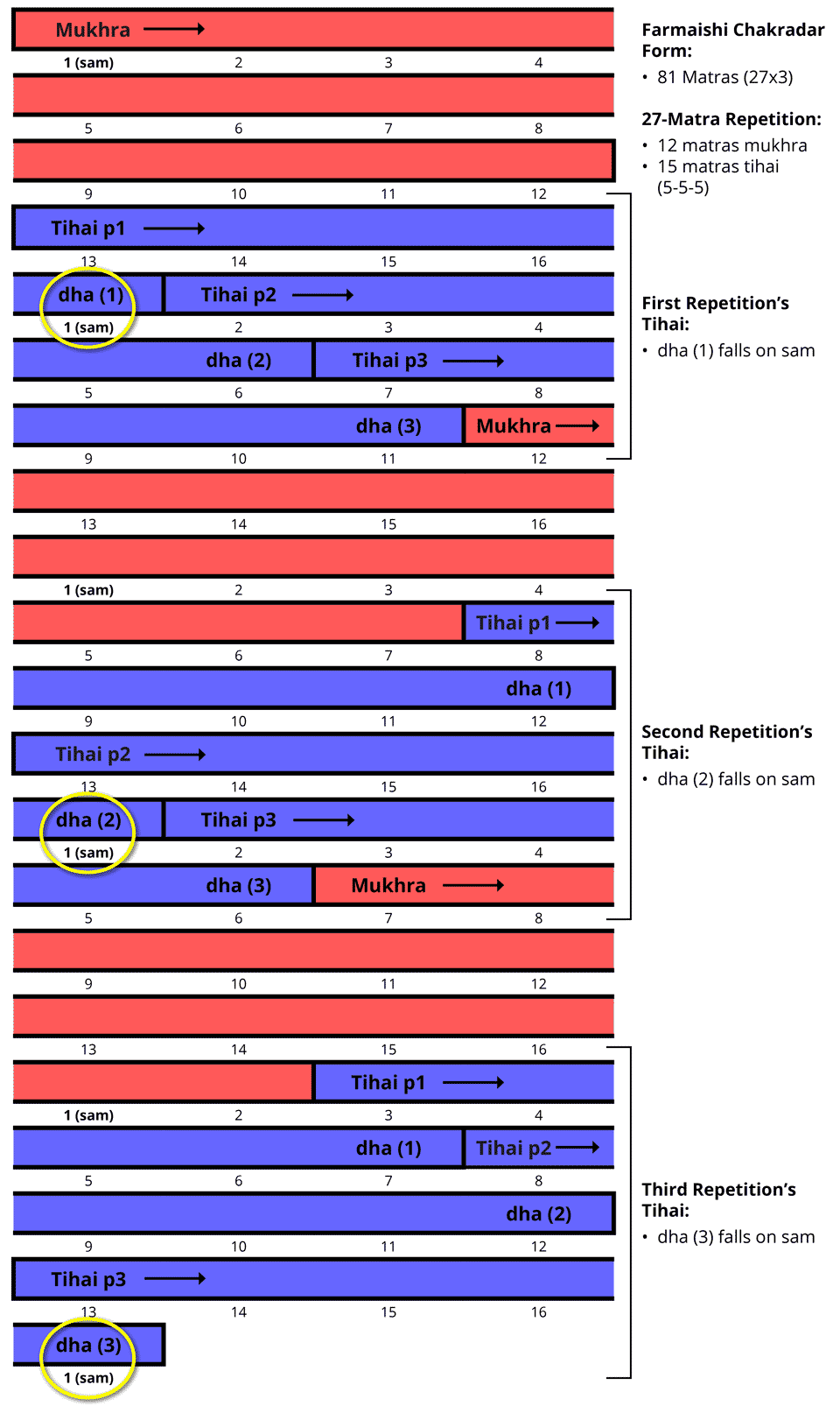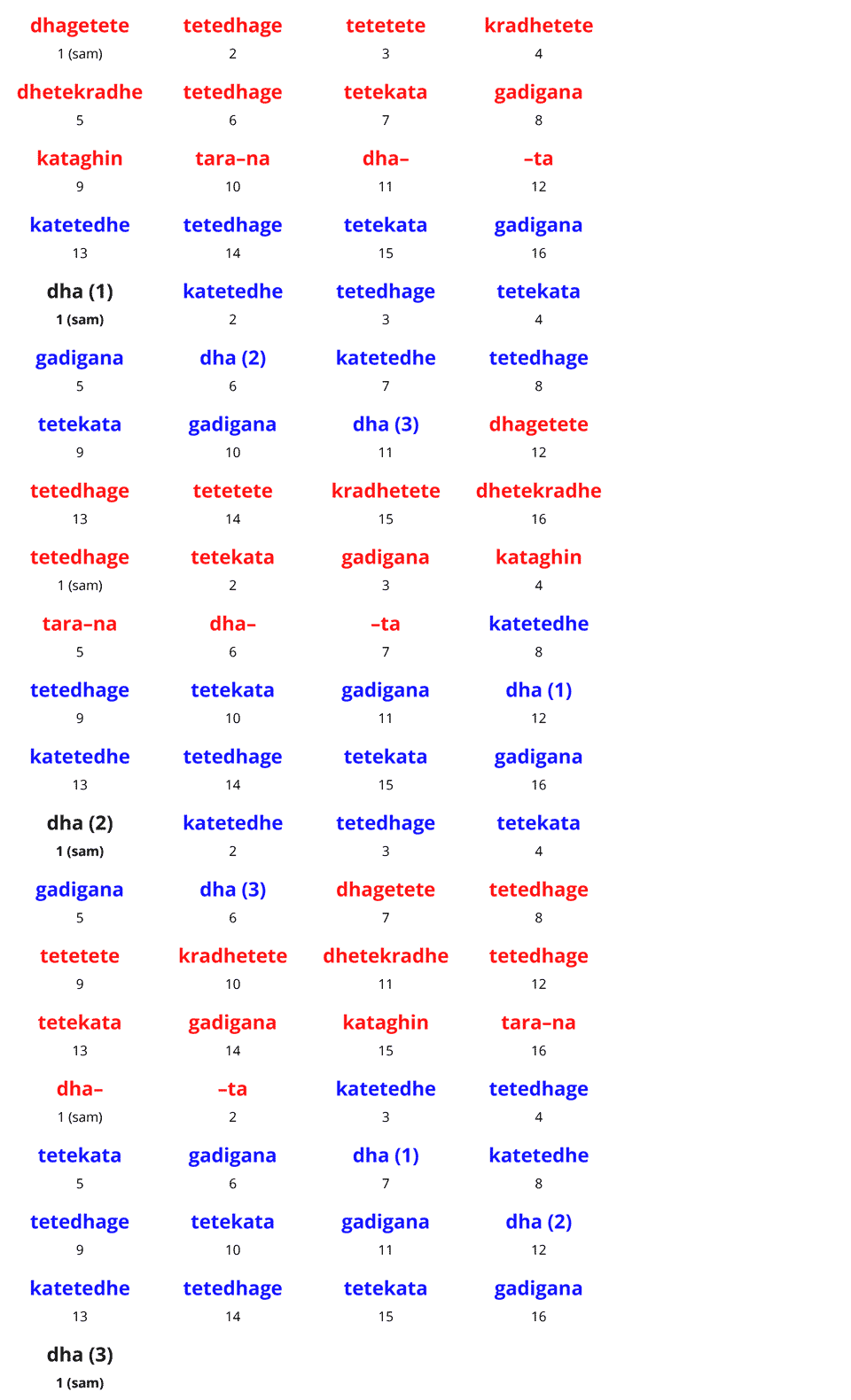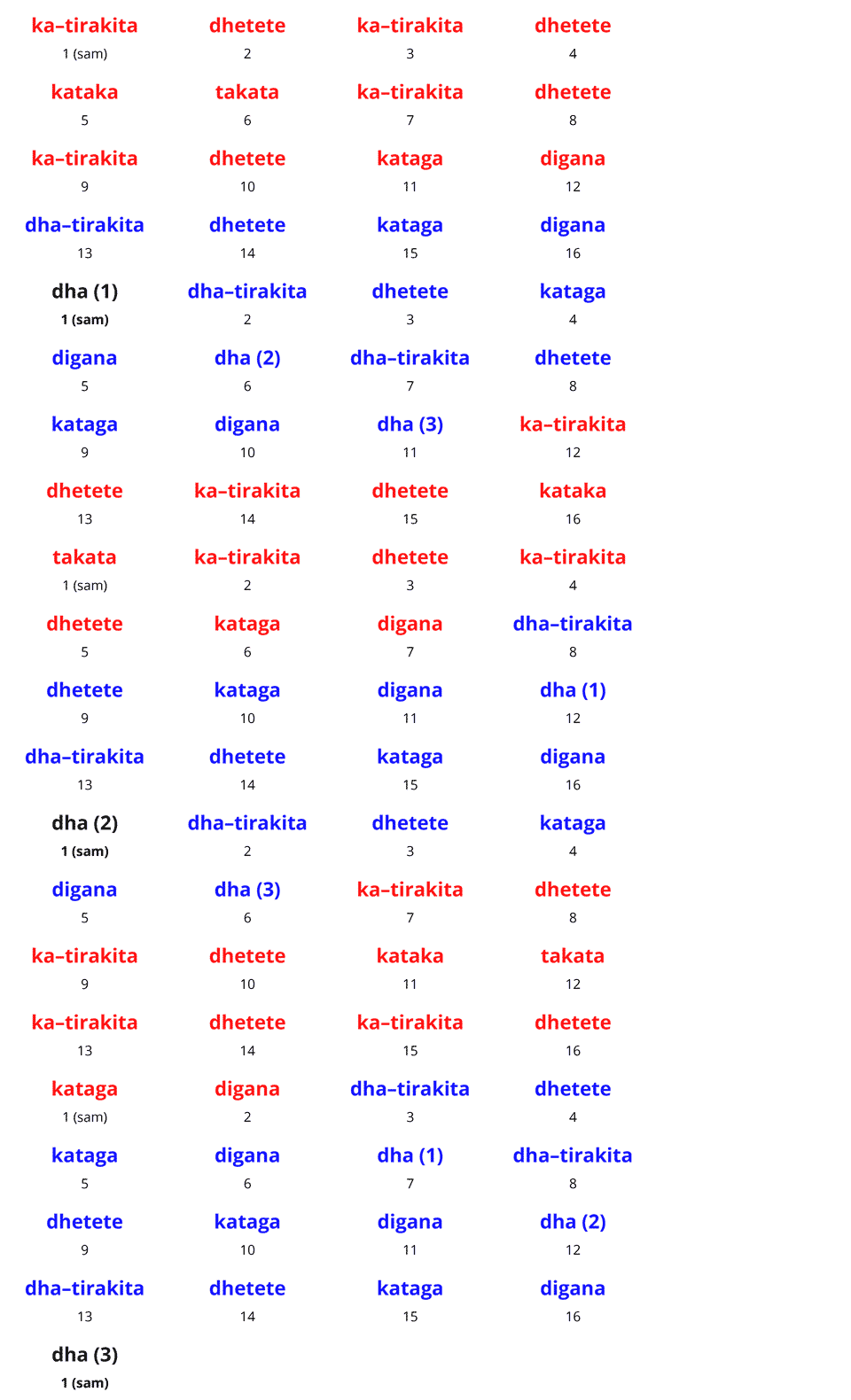Farmaishī Chakradar – फरमाइशी चक्रदार
Literal Meaning: “request” chakradar
Note: The term farmaishi has a number of related meanings, and different gharanas may have different farmaishi forms. See discussion below.
Farmaishi Chakradar Characteristics
- Length of chakradar: 81 matras (5 avartans plus sam)
- Length of main repetition: 27 matras
- Length of mukhra: 12 matras
- Length of tihai: 15 matras (5–5–5)
- Length of pause between main repetitions: 0

We will look more closely at the full farmaishi chakradar form below.
About the Farmaishi Chakradar
The farmaishi chakradar has its roots in the farmaishi request. This is a tradition where an audience member requests a certain kind of composition. This could be a difficult or special composition, such as a tihai, gat, tukra, or chakradar.
The farmaishi request is less common today in public concerts. But it still happens in small or private concerts where more knowledgeable connoisseurs of the music may be in the audience.
The farmaishi chakradar has the same basic structure as the sadharan chakradar we saw in the last section. But the internal structure (discussed below) is different and cannot be changed, except slightly.
This is because the main characteristic of this farmaishi chakradar form is that the 3 dhas of the tihai each land on sam at specific points of the composition (explained below).
The current use of the term farmaishi chakradar is most commonly used for the form presented here. But some traditions might call this form a kamali chakradar, or a kamali farmaishi chakradar. In other words, for some players, there is no difference between a farmaishi chakradar and kamali chakradar.
In other traditions such as Chhotelal Misra’s, the kamali chakradar has a different, but related form which we will look at in the next section.
Farmaishi Chakradar Mathematics
The farmaishi chakradar has the same basic math as the sadharan chakradar:
- Length of chakradar = 81 matras (5 avartans plus sam: 5 x 16 = 80 +1 = 81)
- Length of repetition = 27 matras (27 x 3 = 81)
But the internal structure (mukhra and tihai) of the farmaishi chakradar has a particular division which must be followed:
- length of mukhra = 12 matras
- length of tihai = 15 matras (5–5–5)
This is because the farmaishi is designed to have a particular effect based on where the dhas of the tihai fall in each repetition. (Note: Slight variations of these divisions are possible, as long as the 3 dhas of the tihai fall in the same place.)
If we look at the basic form of the main 27-matra repetition below, we can see that each part of the tihai ends in dha, as do most tihais. For our purposes, we can label these “dha (1)”, “dha (2)”, and “dha (3)”:

Each of these three dhas will eventually fall on sam.
Which dhas fall on sam?
- In the first main repetition, dha (1) will fall on sam
- In the second main repetition, dha (2) will fall on sam
- In the third main repetition, dha (3) will fall on sam

Another way to think of this is that the three dhas fall on sam in a pattern of beginning (1), middle (2), and end (3). We will see a similar pattern in the two kamali chakradar forms.
Full Farmaishi Chakradar Form:

Farmaishi Chakradar Example 1
27-Matra Repetition:

Farmaishi Chakradar Example 2
27-Matra Repetition (in 3:1):

Full Chakradar (dhas which fall on sam are in bold):

(demonstration coming)
References
Misra, Chhote Lal. Tal Prabandh. New Delhi: Kanishka Publishers, 2006. (Hindi)
—. Playing Techniques of Tabla – Banaras Gharana. New Delhi: Kanishka Publishers, 2007.